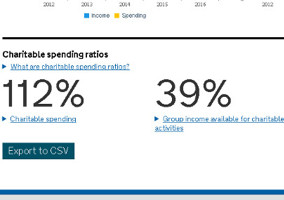For something that is often dismissed as dull and bureaucratic, the Charities SORP certainly arouses plenty of debate. This is probably because of the sheer amount time that finance and other charity professionals put into their annual reports and accounts, and the difficulty of judging their effectiveness.
Debate was sparked this time by a paper from Joe Saxton of the research consultancy nfpSynergy. He resigned from the Charities SORP Committee last autumn as he feels it “isn’t responding to the public’s need for more accessible and transparent financial reporting”.
(Separately, Joe is featured in the forthcoming issue of Charity Finance, as he summarises a hugely valuable report highlighting the problems that charities encounter with their grantmakers.)
I didn’t agree with everything in Joe’s SORP paper. But where he may have hit on something is in raising the issue of who the audience is for annual reports and accounts and whether their needs are being effectively served.
'Institutional funders and researchers are the main readers'
The SORP-making body’s statement of drafting aims identifies funders and donors as the main audience for annual reports and accounts. However, it seems likely that in practice, it is institutional funders and researchers who are the main readers rather than ordinary donors. Indeed, nfpSynergy conducted a focus group which demonstrated how dense and inaccessible members of the public find them.
My feeling is that the SORP is at risk of falling between two stools. As my colleague David Ainsworth recently pointed out, annual reports and accounts are at a base level hugely valuable because of the behaviours enforced by their existence. And at most they must be accessible to educated funders and journalists. But all that is required for this is an unflashy text document.
At the other end of the scale, there is the hope that annual reports can be made accessible to the public through graphics and summarised information. But the truth is that SORP-compliant accounts, in part hemmed in by the requirements of FRS 102, are not fit for the purpose of communicating with ordinary people.
Until such time as there is an alternative approach, it is right that charities continue to put in the effort to make their annual reports as accessible and informative as possible. But in an ideal world, perhaps a framework would be created for a separate, shorter document designed specifically for the public.
Rethinking the composition of the Charities SORP Committee will be one way to help achieve that, although a solution must be found to the fact that Financial Reporting Council compliance means that the vast majority of committee discussions are unintelligible to non-experts.
That said, however, it is vital that the right information is included within such any such summary document. Numbers are meaningless without context, and measures of fundraising costs and trading costs as a proportion of income risk misleading rather than informing.
Gareth Jones is editor of Charity Finance magazine
Related articles












